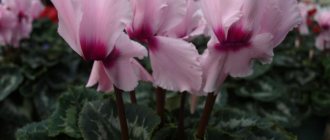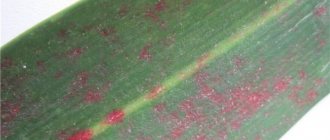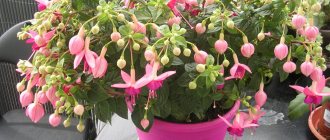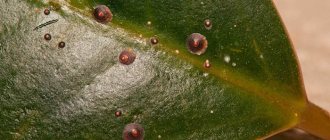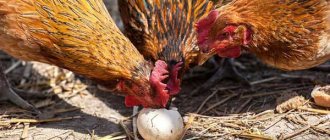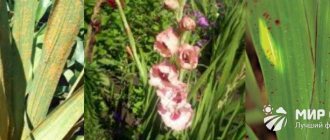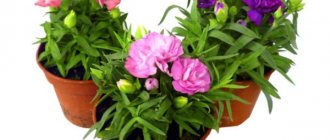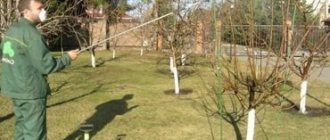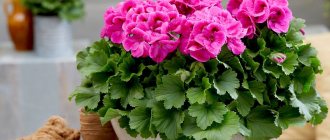Home conditions for pelargonium
Pelargonium (aka geranium), which is grown on windowsills, is a native of the South African savannas. And like all Africans, she loves the sun and warmth very much, but has a negative attitude towards soil that is too nutritious and too wet. Rain is rare in the savannah, and the land there is poor.
Pelargonium is a true African, it loves the sun, warmth and can tolerate a slight drought
In indoor floriculture, three types of pelargonium are known: zonal, royal (or royal) and ampelous. It is the zonal, or garden, geraniums that are planted in flower beds in the spring. They bloom for a very long time and reproduce without problems from cuttings. Royal pelargoniums are more whimsical. Their flowers are larger and more interesting than those of the zonal ones, but the flowering period is shorter and they are more difficult to reproduce. Ampelous geraniums are the most delicate and complex. But in general, pelargoniums are not very demanding and grateful flowers.
The strongest pelargoniums are zonal, royal and ampelous varieties, which are more delicate
The characteristics of flowering southerners must be taken into account when growing them at home. Place pelargonium window sills on the south, east or west side. Plant it in a cramped pot so that it blooms better, give it not very nutritious soil with a good drainage layer.
Pelargonium grows well on the sunny side, and a small pot stimulates flowering
Water rarely, but a lot, when it grows and blooms. But do not allow water to stagnate, remove excess water from the pan. In winter, only lightly moisten the soil; it should have time to dry out between waterings. There is no need to spray pelargonium; in nature it is not spoiled by high humidity. On the contrary, pubescent leaves can get sick if drops get on them. Be careful with fertilizing. Pelargonium can get sick from both lack of nutrition and excess. So keep your balance.
During flowering, pelergonium needs abundant watering and feeding, but during dormancy, excess moisture and nutrition can lead to disease.
Blooming geranium needs fresh air all year round; ventilate the room where it grows. This is a good prevention of fungal diseases. In the summer, give the flower walks: put it in the fresh air or even plant it in open ground. The geranium will literally bloom there. In the fall, bring the whole plant or its cuttings home again.
Organize cool wintering, optimally from +10 to +15 degrees. And in winter, just as in summer, pelargonium needs plenty of light. If there is a deficiency, the leaves will be small, and flowering will be sparse or buds will not form at all. If there is not enough sun, artificial lighting (phytolamps, fluorescent or LED) will help.
Indoor geranium responds well to pinching and pruning. Form a fluffy bush in spring and summer, trim pelargonium for rejuvenation. And be sure to remove faded flower stalks so that new ones appear.
Pelargonium needs good lighting all year round; without this it will not bloom, and may even get sick.
But don’t rush to transplant pelargonium from pot to pot. This plant is not prone to changing places. After relocation, she may turn yellow and become depressed so that resuscitation is required.
Why do pelargoniums start to get sick more often?
Once upon a time, flowering geraniums were considered very healthy plants and resistant to all sorts of ailments. Probably the fact is that flower growers did not even try to understand why the leaves suddenly turned yellow or red, and the buds and flowers withered. They simply broke off a branch and grew a new healthy plant, and threw away the old one. Now pelargonium has become more expensive, both figuratively and literally. Flower lovers become attached to their pets and do not want to lose them. And varietal types of pelargonium are not so little worth throwing at them.
Pelargonium lovers try to cure their delicate pets if they are sick
At the same time, with the development of home floriculture, plants developed diseases that our grandmothers, who grew geraniums on the windowsill, did not even suspect. Oddly enough, progress is to blame. New varieties of pelargonium are very decorative; they bloom more brightly. And at the same time, they are more delicate and more easily infected with fungal or viral infections, and suffer more from care errors and metabolic diseases. Plant immunity has become much weaker. And fungi, viruses and pests are hardened, they mutate, adapting to modern drugs, and increase resistance. So it turns out that pelargonium lovers are forced to acquire special medicines and reference books to treat their flowers. But it is not all that bad. Pelargonium, which has been created in optimal conditions and is adequately cared for, will be healthy and certainly bloom.
Pelargonium will bloom with proper care
Video: all about the problems of caring for geraniums
What kind of plant is this?
The full name of the plant is ivy-leaved ampelous geranium (read about why ampelous geranium is called ivy-leaved geranium and how to properly care for the flower here). This phrase contains a description of her appearance.
Ivy leaf - indicates that the shape of the leaves of this plant is similar to ivy leaves. If you touch them, you might think that the plant is not real, since the leaves of ivy geranium are quite hard. The word “ampeloid” in the name means that the plant has long hanging branches, unlike ordinary geraniums, where there is a short, vertical stem.
Thanks to its curly flexible branches, the length of which can reach one meter, the ivy-leaved ampelous geranium creates a mesmerizing picture with its appearance.
Another difference from ordinary geranium is the size of the surface of the leaves. This type of geranium has even and smooth leaves of a larger size, whereas the leaves of ordinary geranium are small and covered with fluff.
Diseases and pests of pelargonium
Diseases of pelargonium can be divided into two large groups: non-infectious and infectious. Non-infectious diseases cause violations of the rules of care and metabolic processes of the plant. These are hypothermia, swelling, deficiency or excess of microelements, a reaction to chemicals. Infectious diseases are the result of infection by a fungus, bacteria or virus; these are various rots, spots, rust, powdery mildew, and blackleg. Such diseases are dangerous because they are easily transmitted from flower to flower. Therefore, when an infection is detected, it is necessary to urgently take quarantine measures to prevent infection and epidemics.
A plant with an infectious disease must be isolated, otherwise the entire collection will become infected
Pests are not too fond of pelargonium. For example, a punishment for flower growers - spider mites or scale insects rarely attack geraniums.
Perhaps the specific aroma of the essential oil contained in the foliage of most plant species repels insects. But whiteflies, aphids, mealybugs and rootbugs are not bothered by this feature. And in the summer, when kept outside, geraniums are attacked by caterpillars.
Phytocontrol measures
It is easier to prevent a disease than to cure it; this principle of prevention also applies to plants. And her main rule is hygiene. A plant free from diseases and parasites and clean soil will be the key to healthy pelargonium. A flower can pick up an infection or parasite anywhere: in a nursery, in a store, in the soil. To protect your green pets, introduce home phytosanitary control. These measures will ensure the safety of the plants.
- Make sure the new plant is not infected with disease or parasites. Before bringing it home, inspect the stems and leaves, and, if possible, the roots. If there are spots, dots, other damage or symptoms of disease, you should be wary. Inspect geraniums for insect pests. An innocent white speck may turn out to be a mealybug. If the damage is severe, it is better to abandon the plant; it can infect others. And such an acquisition will bring more trouble than pleasure.
- The new plant, at first glance, is completely healthy. Don’t be complacent about this and don’t rush to add him to the other green pets. Health problems may appear later. Fungal and viral diseases have an incubation period during which symptoms do not appear. And pests whose adults have been destroyed can leave behind larvae. Keep the new flower in isolation for at least two weeks, and preferably at least a month. Only after quarantine introduce him to the rest of your windowsill neighbors.
- Be careful when replanting pelargoniums. She doesn't like this procedure anyway. Additionally, most bacteria, fungi and parasites are spread through soil. And store-bought soil is no exception. It may contain not only useful components, but also fungal spores. Before planting, be sure to disinfect the substrate and drainage by heating, and pour boiling water over the pot. You can also water the new soil with a solution of some fungicide.
An infection or pest can enter the house from the greenhouse, so keep new plants in quarantine
Video: inspection of new plants and preventive treatment
Planting and transplanting
It is best to plant ivy geranium in fertile soil containing a large amount of vitamins and minerals. It is important to pay attention to the size of the pot.
The distance from the walls of the pot to the roots of the geranium should not be more than 2 centimeters. If this rule is violated, the plant may stop blooming and begin to increase the number and length of branches and leaves.
The material of the pot also plays an important role. Plastic, unlike clay, retains moisture in the soil much longer, preventing it from drying out. Therefore, it is better to give preference to clay pots.
It is recommended to replant this type of geranium once, maximum twice a year. The most suitable month for this is March. The choice of month is explained by the fact that the plant has not yet had time to produce flowers and is able to take root in a new place during this period.
Symptoms and diagnoses (table)
| Manifestation of the problem | Care error | Disease | Pest |
| Pelargonium leaves turn yellow and fall off. | Too warm air, excessive watering or draft. | Root rot in the initial stage. Excess nitrogen in the soil. | If white fluffy lumps are visible in the sinuses, it is a mealybug. |
| The lower leaves turn yellow and the edges dry out. | Old leaves die over time, this is a natural phenomenon. | Nutritional deficiency. | |
| There are wet areas on the stems, the leaves wither. | Stem rot. | ||
| Pelargonium does not form buds and turns yellow. | Very high temperature, high humidity. | Not enough nutrients. | |
| The plant has stopped growing, the leaves are limp even after watering. | The pot became too cramped. | Lack of nitrogen, low soil acidity. | Inspect the undersides of the leaves. It could be a whitefly or mealybug infestation. |
| There are brown-red spots on the foliage, the trunk also turns red. | Hypothermia or too much direct sun | ||
| Black dots on leaves. | Unbalanced watering, pelargonium is either dried or watered. | ||
| The leaves turn yellow in the center, the edges remain green. | Magnesium chlorosis. | ||
| The edges of the leaves turn white, but do not dry out, and may be limp. | Nitrogen deficiency. | ||
| The stem darkens and rots from below. The leaves are withering. | Blackleg. | ||
| Leaves wither and droop like umbrellas | Soil drying out. | Fungal infection. | |
| There are swollen watery tubercles on the leaf blade. | Overwatering of the soil is sometimes combined with periods of dryness. | Edema (edema). | |
| Brown-gray spots on the leaves and stems of the plant, especially in the lower part. | Gray rot. | ||
| Pelargonium does not grow, turns yellow entirely, and fades. | Root rot in advanced form. | Root mealybug | |
| The stem stretches out unsightly. | Lack of light with short days. | Etiolation. | |
| The roots and lower part are covered with spots pressed inward. The spotting quickly spreads upward. The plant withers if left untreated and dies. | Stem and root late blight. | ||
| On the upper side of the leaf blade there are light green blurry spots with brown dots in the center. They quickly increase in size and merge. | Rust. | ||
| Light spots with a ring pattern on the leaves. Later they become deformed. The plant does not develop and does not bloom. | Ring spot. | ||
| There is a whitish coating on the leaves. | Powdery mildew. | ||
| Yellowing of leaves along the veins. | Tobacco or tomato viruses. | ||
| The leaves have holes of different sizes. | Caterpillar attack. | ||
| Young shoots, leaves, buds curl and die. | Aphid infestation. | ||
| A net forms on the leaves, with a green pattern along the veins and yellow spots between them. | Manganese deficiency. | ||
| The leaves lose color and turn pale. | Chlorosis, iron deficiency. | ||
| The leaves become very dry at the edges and curl. | Bacterial burn. | ||
| The edges of the leaves turn brown and dry out. | Reaction to a low-quality fungicide or its excess. | Excess phosphorus. | |
| The leaves are green, but curled up. | Reaction to watering with herbicide. | ||
| The leaves die, there are greenish larvae on the underside, and flying insects around. | Whitefly infestation. |
Geranium diseases, treatment and prevention
Pelargoniums most often get sick due to waterlogging of the soil. It is the flooding of the plant that gives impetus to the development of various types of rot and spotting. The disease progresses especially quickly if the room is stale, stale air, too cold or, conversely, too hot. Pelargonium gets sick from a deficiency of microelements, but also from overfeeding. These problems weaken the immune system. As a result, the plant becomes more easily infected with fungal or viral infections.
Problems caused by metabolic disorders and care errors
Diseases related to care and metabolism are not contagious. Plants with etiolation, chlorosis, deficiency or excess of nutrients are not sent to quarantine. But these ailments cannot be left without treatment, because sooner or later they will lead to more serious problems.
This pelargonium is suffering from care errors; the leaves have turned red either from hypothermia or from too much direct sun.
Etiolation is a disease of light deficiency. If pelargonium does not have enough light, it stretches unsightly, the leaves become smaller and lighter. Such a plant will not bloom. It is not difficult to cure: place the geranium on the sunny side, and in winter add artificial lighting. Just be careful, get used to bright light gradually so that there are no burns. In addition, for the harmonious formation of a flower, it is useful to turn it towards the light with different sides.
With a lack of light, the leaves become smaller and lighter, the stems elongate
Edema, or edema, mainly affects ivy-leaved pelargoniums, less often other species . The cause of the disease is non-drying soil combined with cold and humid air. The roots absorb water, but the leaves do not have time to evaporate it.
Too much watering and humid air lead to swelling of the leaves.
The tissue ruptures and watery pads form on the underside. Affected leaves die or lose their decorative properties. The pads enlarge and become coarser, acquiring a brownish color. Therapeutic measures include drying the soil, adjusting watering, and reducing air humidity. Prevention - good drainage and fresh air.
Magnesium deficiency causes leaves to turn yellow in the center.
Chlorosis is a disruption of the process of photosynthesis. Symptoms of the disease are changes in leaf color and slower growth. Usually, when talking about chlorosis, they mean iron deficiency. But in pelargoniums, the lack of other chemical elements also affects health and appearance. For example, a deficiency of magnesium causes yellowing of the center of the leaves, a lack of manganese causes a green mesh to appear along the veins with yellowness inside, the edges of the foliage turn white from a lack of nitrogen.
White edges of leaves are a lack of nitrogen
In all cases, there is only one solution - to choose a mineral complex containing the necessary components. For example, iron chelate (Antichlorosin) for deficiency of this element. Or a fertilizer balanced in composition.
Treatment of chlorosis is the selection of a nutritional complex with deficient elements or transplantation into fresh soil
Pelargonists note that the preparations Uniflor-Rost, Uniflor-micro, plant regenerator Pokon Green Power, Agricola Aqua for yellowing of leaves have proven themselves well.
But no less than a deficiency of nutrients, their excess is harmful for pelargonium. Too much nitrogen in the soil will cause the leaves to turn yellow; too much phosphorus will cause the edges to become brown and dry. Therefore, it is better to slightly underfeed the geranium.
Phosphorus is beneficial for plant flowering, but its excess is harmful to leaf health
Metabolic problems can also be solved by transplanting pelargonium. The right substrate should have everything you need for growth and health.
Geraniums find it difficult to take root in a new place. Immediately after transplantation, they need gentle care. Pelargonium is placed in a warm place. Shade from direct sun. Water moderately; unestablished roots easily rot. No spraying is necessary. You can add stimulants to irrigation water: epin or zircon.
Too concentrated a fungicide solution can harm pelargonium
Pelargonium can get sick after using herbicides or fungicides. The former are used to control weeds in open ground, the latter - to treat rot. In this case, transplantation or gentle transshipment will help. may have to get rid of the affected foliage, but it will grow back. The main thing is the condition of the root. If it is healthy, the plant can be treated.
Pelargonium treated with herbicide may lose all leaves
Infectious diseases
A fertile environment for the development of pathogens of infectious diseases is waterlogged and unsterilized soil. Various fungi, bacteria and viruses multiply there quickly. Pelargonium that has contracted an infection must be isolated. If a green patient is left among healthy people, everyone can become infected. Some infections are so fleeting and dangerous that immediate destruction of the diseased plant is required.
If you do not pay attention to pelargonium disease, it may die from infection.
Prevention of infectious diseases:
- attentive, without excess, watering;
- dry air, especially in a cool room;
- mandatory soil sterilization;
- pest control;
- quarantine for new plants.
Fire blight is leaf damage caused by different types of microorganisms. Dry spots appear, leaves become deformed. Another manifestation is that when the leaves wilt, they droop like an umbrella. The plant stops growing. In this case, the root system does not suffer. Ways of transmission of infection are through splashes of water, dirty tools during pruning, through soil, and insects. The disease has no cure. Try to root the uninfected parts. The rest should be packed in a bag and thrown away, or better yet, burned.
Do not wait for the foliage to completely turn yellow; cut the plant as soon as possible. But keep in mind that limp umbrella leaves can also be a sign of dry soil.
Viral diseases cause a peculiar mesh pattern on the leaves. It usually appears during the cold season, when the defenses weaken. Leaves affected by the virus look picturesque. And yet it is a disease. The plant lags behind in development, but can live a long time. There are specific viruses characteristic only of pelargoniums; tomato and tobacco viruses are especially common. Viral infections cannot be treated. The gardener has three options: destroy the plant, remove variegated leaves, or grow pelargonium with an unusual color. If you decide to save a flower, be careful: keep it at a distance, do not use the same tools to trim diseased and healthy plants. The virus can be carried by insects.
The viral infection that causes crocodile spot is now being used to develop new varieties. Plants are infected for decorative leaves.
Beautiful spotting is the result of a virus
Fungal diseases
- Gray rot affects the leaves, peduncles and stems of geraniums. Weeping grayish-brown spots form on them. The disease is provoked by overwatering and excess nitrogen in the soil. Treatment: rotten leaves and parts of the stem are removed, watering and fertilizing are stopped. To destroy the pathogen, fungicides (Fundazol or Vitaros) are used.
- Stem and root late blight is caused by the late blight fungus. The green part of the pelargonium fades; dark depressed spots are visible on the bottom of the stem and roots. They are increasing. Treatment: dryness, change of soil, treatment with Previkur, Ridomil or Profit Gold.
- Ring spot affects only the leaves. First, light spots in the shape of rings form, and then they curl. Geranium slows down and does not bloom. Treatment: removal of damaged leaves and treatment with fungicides.
- Powdery mildew is a rare fungal disease of leaves. A whitish coating remains on them, similar to flour. The disease spoils the appearance, but does not pose a serious threat. Treatment: remove the leaves affected by the fungus, spray the plant with a fungicide or dust with sulfur.
- Blackleg is a fungal disease of stem cuttings and, less commonly, adult pelargoniums. Waterlogged and heavy soil without drainage contributes to the development of infection. The stem at the root darkens and rots. Infected cuttings should be discarded. And the tops of adult plants need to be cut off and rooted.
- Rust is a disease that affects zonal pelargoniums. The initial symptom is light green spots on the leaves with red-brown dots. The spotting becomes larger and the leaf dries out. Brown concentric sporangia of the fungus, which is the causative agent of the disease, are visible from below. Spores spread through the air and with water, they quickly penetrate into healthy leaves. The incubation period is up to 10 days. Treatment: remove infected leaves, use healthy parts for cuttings, if the plant is not seriously damaged, limit watering, organize air circulation around, treat with a fungicide, repeat after 2 weeks.
- Root rot is the most dangerous disease. The fungus literally eats the root, pits appear on it, and then the tissues become limp. The green part of the pelargonium turns yellow, withers and, if the disease is advanced, dies. Only after taking the plant out of the pot can you decide whether to treat it or throw it away.
If the rot has affected only a small part of the roots, follow these steps:
- Stop watering pelargonium.
- Remove it from the pot and wash the soil off the roots.
- Remove the rotten parts, leaving only white healthy tissue.
- Sprinkle the cuts with crushed coal, cinnamon or sulfur.
- Treat the plant, including the root and green parts, with a fungicide (Hom, Acrobat, Oxychom, Fundazol, Previkur).
- Plant the geranium in a new pot with fresh, pre-sterilized soil.
- Start watering after one to two weeks.
Rot and other infectious diseases in the photo
Bacterial burn cannot be cured Viral diseases cannot be cured
Root rot in an advanced stage leads to the death of the plant
Zonal pelargoniums living in stuffy rooms become infected with rust.
Blackleg most often affects cuttings, but adult plants can also become infected
Bacterial burn can be confused with moisture deficiency
Ring spot threatens only the decorativeness of pelargonium
Powdery mildew is not a very dangerous disease
Gray rot is treated with dryness and fungicides
Late blight is a fungal disease, the leaves turn yellow and spots appear on the stems
Video: mold, rot and other fungal diseases - prevention and control
Prevention
Almost all diseases and problems of pelargonium arise due to violations in care, so to prevent them you just need to follow simple rules:
- Maintain the correct temperature;
- Control air and soil humidity;
- Control lighting;
- Regularly feed the soil;
- Control the occurrence of pathologies in the plant;
- Fight insects.
Among insects, you should pay special attention to spider mites, whiteflies and aphids. They often appear in places with dry air and are carriers of infections and viruses. If these insects are found in the room where flowers grow, it is necessary to wash the plant and treat it with insecticides.
Pests and their control
For most pests, healthy pelargonium is not the most delicious dish. And when the plant becomes weaker due to improper care, heavy and dirty soil, and rots, it is immediately attacked by insects. Of course, disease and parasites do not always appear together, but more often than not, trouble does not come alone.
- The root bug loves moist soil, where it quickly reproduces and feeds on the roots of pelargonium. It loses its strength, the leaves become small and yellow, and the young shoots die off. You can see the pest only by removing the plant from the pot. If the damage is significant, the flower dies; try cutting and rooting cuttings. If the problem is detected in time, wash off the soil completely. Use a knife to remove the affected roots, dip the remaining ones in a container of hot water, then dry them and sprinkle with charcoal. Plant in new, sterile soil; for prevention, you can spray it with Tekta or Vidat.
- Mealybugs hide under clumps of sticky white substance, similar to cotton wool. The insect sucks the sap of the plant. Be sure to isolate the infected flower; the worm easily spreads to other plants. Remove pests by hand using a damp cloth. After this, spray or wash the pelargonium with a soap-alcohol solution (20 g of laundry soap and 20 ml of alcohol per 1 liter of hot water). If the lesion is massive, treat with Fufanon, Aktara or Aktellik insecticides.
- The whitefly lives on the underside of the leaf and feeds on the juices of pelargonium, especially loving the more delicate royal ones. Significantly affected leaves must be removed, and the plant must be made poisonous to the pest. To do this, water the soil with a solution of the drug Aktara (1 g per 10 liters of water, with plant heights up to 40 cm), perform the procedure at least three times, at weekly intervals. The larvae of the harmful butterfly will die out. As soon as they appear again, and this may be on royal pelargoniums, apply Aktara. Another way to combat whiteflies: treatment with Confidor. Spray the plant, cover with a bag and leave overnight. This drug has a drawback - a strong odor. Therefore, it is better to carry out processing outside the home.
- Aphids eat young shoots, buds and leaves and settle in large colonies. The insect can be brought into the house with store bouquets or new plants. Peduncles affected by aphids die, leaves curl and dry. Remove the pest by hand or cut off damaged shoots and buds. In case of severe damage, treat according to the instructions with Mospilan or Fitoverm.
- Caterpillars can greatly harm pelargonium, which spends the summer in the fresh air. They chew many holes in the leaves. Cutworms (small gray butterflies similar to moths) or meadow moths lay eggs on geraniums. They and the caterpillars can be collected, and the drugs Senpai or Lepidocide will protect the pelargonium. Treatment will last for 2-3 weeks.
Pests of pelargonium in the photo
The whitefly reproduces rapidly, eating delicious royal pelargonium
Caterpillars of street butterflies annoy pelargoniums in summer
Mealybugs greatly weaken the plant
Root bug causes serious damage to pelargonium
Aphids feed on young shoots
Video: whitefly on pelargonium
How to treat geranium
The following drugs are used to treat crane fungus:
- Aspirin. Relevant when insects appear. A tablet of the drug dissolves in 8 liters of water. Then the composition is sprayed onto the leaf blades once every 21 days;
- Messenger. The composition of the drug includes proteins of natural origin. They are necessary to increase the immune properties of geranium. This stimulates the plant’s independent fight against pests. The drug is used according to the instructions. It is introduced into the ground when watering using a watering can;
- Marathon. Helps combat aphids, scale insects, fungus gnats, and whiteflies. The drug is applied to the soil and then watered. Apply once a season. Its effect lasts for 90 days;
- Monterey. Helps against caterpillars. It is a liquid composition that must be diluted with water. The resulting product is sprayed onto the plant. Apply once a week.
It is important for plant owners to constantly examine it for defects, spots, and yellowing, as this helps to recognize the disease in a timely manner and begin to fight it.

